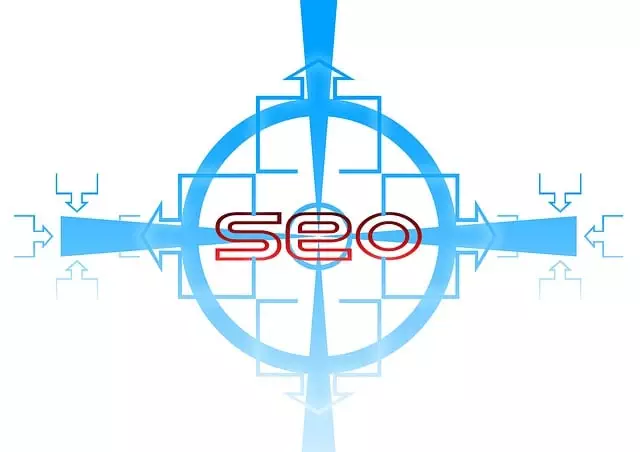SEO Content Optimization thrives on understanding user intent behind search queries. By deciphering whether users seek information, solutions or guidance, content creators can align their material with specific needs. This involves strategically incorporating relevant keywords, crafting engaging titles and providing detailed, location-relevant info. Diversifying content formats and leveraging advanced keyword research techniques like semantic analysis further optimizes for user intent and search engines. Adapting to voice search and assistive technologies is crucial for staying competitive in the evolving digital landscape, ensuring inclusive and relevant content that enhances engagement and conversion rates.
User Intent Optimization Training is a strategic approach to elevate your SEO game. In today’s digital landscape, understanding user intent behind search queries is paramount for successful content optimization. This article guides you through essential steps, from deciphering search intentions to optimizing for voice search and assistive technologies. Learn effective strategies for aligning content with user needs, enhancing relevance, and measuring success through engagement and conversion rates. Dive into these techniques to transform your SEO content strategy.
Understanding User Intent: The Foundation of SEO Content Optimization

Understanding user intent is a cornerstone in the realm of SEO Content Optimization. It involves comprehending why users are searching for specific terms, what they hope to achieve, and the information they seek. By aligning content with the underlying intent behind search queries, brands can deliver more relevant and valuable resources to their target audience. This approach ensures that when users interact with optimized content, their needs are met effectively, leading to improved user satisfaction and engagement metrics.
In terms of SEO Content Optimization, identifying user intent allows creators to tailor content to address specific questions or tasks. For instance, a user searching for “best tips on time management” intends to learn effective strategies. Optimized content in this case would provide comprehensive guides, lists, or videos tailored to these needs, making the website a valuable resource and potentially increasing time spent by users on the site.
Decoding Search Queries: Extracting User Needs and Expectations

Decoding search queries is a critical step in understanding user intent, which forms the backbone of effective SEO content optimization. When users type into search engines, they often provide more than just keywords; they offer clues about their information needs and desired outcomes. By employing advanced natural language processing techniques, search engines can interpret these queries to identify not only the topic but also the user’s intent behind it.
For instance, a query like “best coffee shops near me” reveals a local business inquiry with an emphasis on finding high-quality coffee. This understanding enables content creators and SEO specialists to optimize their material by incorporating relevant keywords, crafting compelling titles, and providing detailed, location-specific information that aligns precisely with what users are seeking.
Aligning Content with User Intent: Strategies for Effective Optimization

In the realm of SEO Content Optimization, aligning content with user intent is a game-changer. It involves understanding what users truly seek when they interact with search engines and delivering precisely that information. By adopting strategies that cater to user intent, content creators can ensure their material resonates with the target audience, leading to higher engagement and better search engine rankings.
One effective strategy is keyword research, which identifies the terms and phrases users use to express their intent. Incorporating these keywords naturally within content not only improves relevance but also signals to search engines that the content is tailored to meet user needs. Additionally, creating content formats that address specific stages of a user’s journey—from informational needs to consideration and purchase—can enhance overall optimization. This involves diverse content such as blog posts, infographics, videos, and interactive elements, each designed to cater to distinct intent phases.
Keyword Research Techniques to Uncover Hidden User Intentions

In the realm of SEO Content Optimization, understanding user intent is key to crafting effective content that satisfies searcher needs. Keyword research plays a pivotal role in this process by shining light on hidden intentions behind queries. By employing advanced techniques such as semantic analysis and related term exploration, marketers can uncover long-tail keywords and latent user desires that traditional keyword research tools might miss. This involves delving into search trends, analyzing competitor content, and exploring user behavior patterns to identify not just what users are searching for, but why they’re searching in the first place.
Through these techniques, businesses gain valuable insights into their target audience’s motivations and pain points. This knowledge allows them to create content that aligns more closely with user expectations, enhancing relevance and quality. By optimizing content based on hidden user intentions, organizations not only improve search rankings but also foster a deeper connection with their audience, leading to increased engagement and conversions in today’s digital era.
Enhancing Content Relevance: Crafting Compelling, Intention-Driven Copy

In the realm of SEO Content Optimization, enhancing content relevance is paramount. Crafting compelling copy goes beyond mere keywords; it involves deeply understanding user intent. By aligning content with the specific needs and queries of your target audience, you ensure that each word resonates with readers, fostering a meaningful connection. Intention-driven copy not only satisfies search engine algorithms but also keeps users engaged, leading to longer dwell times and lower bounce rates.
This approach necessitates a shift from promotional writing towards informative, helpful, and relevant content creation. Through keyword research and user behavior analysis, content creators can identify the underlying motivations behind search queries. Incorporating these insights into your copy allows you to address not just what users are searching for but also why they’re searching in the first place. Such intent-driven strategies ultimately elevate your content’s quality, making it more likely to rank higher and attract a loyal audience.
Optimizing for Voice Search and Assistive Technologies

In today’s digital era, voice search and assistive technologies are transforming how users interact with online content. To stay ahead in SEO Content Optimization, optimizing for these emerging trends is paramount. With the rise of virtual assistants like Siri, Alexa, and Google Assistant, more users rely on voice queries to find information. Optimizing your content for voice search involves using natural language processing (NLP) and long-tail keywords that mimic real user questions.
Assistive technologies, such as screen readers, also play a significant role in enhancing accessibility and user experience. Ensuring your content is structured with clear headings, descriptive alternatives for images, and well-formatted text benefits not only users with disabilities but also search engine crawlers. Integrating these practices into your User Intent Optimization Training will empower you to create content that resonates with a diverse audience and keeps up with the evolving digital landscape.
Measuring Success: Analyzing User Engagement and Conversion Rates

Measuring success in User Intent Optimization Training involves analyzing key metrics like user engagement and conversion rates. By tracking how users interact with your platform, you gain valuable insights into their behavior and preferences. High engagement signifies that users are actively participating, while conversion rates indicate the percentage of visitors who take a desired action, such as making a purchase or subscribing to a service.
SEO Content Optimization plays a crucial role in enhancing these metrics. Optimizing content for search engines ensures it ranks higher on relevant queries, attracting more organic traffic. Well-optimized content also aligns with user intents, providing them with the information they seek promptly and effectively. This leads to improved engagement and, ultimately, boosts conversion rates by making your platform a more valuable resource for users.
Continuous Improvement: Iterating and Refining Your SEO Content Strategy

In the dynamic landscape of digital marketing, continuous improvement is paramount, especially when it comes to SEO content optimization. The key lies in iterating and refining your content strategy based on data-driven insights. Regularly analyze search trends, user behavior, and competitor performance to stay ahead of algorithm updates and evolving consumer needs. By implementing these learnings, you can enhance the relevance and quality of your content, ensuring it aligns with current market demands.
This iterative process involves testing different approaches, from optimizing meta tags and headers to refining keyword strategies and creating more engaging, user-centric content. Each cycle of improvement builds upon the last, leading to a more robust and effective SEO content strategy. Embrace this approach to ensure your content remains competitive, relevant, and better equipped to attract and engage your target audience.
